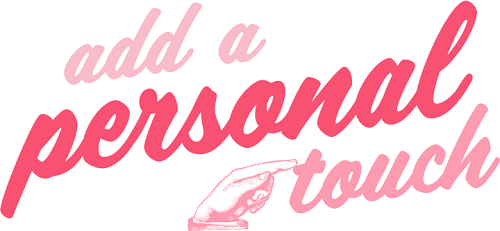Website Personalization and SEO Explained
 Website personalization is when webmasters create content that is customized for visitors. Instead of providing a single and broad experience, website personalization allows webmasters to create a unique experience designed for their needs and wants.
Website personalization is when webmasters create content that is customized for visitors. Instead of providing a single and broad experience, website personalization allows webmasters to create a unique experience designed for their needs and wants.
Personalization is not a new concept, and businesses do it offline. For example, at restaurants, waiters often greet regular diners by name and suggest their regular orders. Or shopkeepers will use visual cues to provide special attention to certain shoppers like an elderly couple.
Website personalization uses and transfers the same one-on-one attention into the digital world. Webmasters can customize web pages based on whether users are first-time visitors or regular visitors. For example, they may include a “welcome” message for first-time visitors and some introductory content.
A personalized experience will allow webmasters to:
- Provide targeted offers to users based on browsing behavior.
- Advertise promotions based on weather and the season.
- Present media material based on where the users reside.
Why is Website Personalization Important?
Users’ expectations have reached a point where they want a personal digital experience that matches their offline experience. Many users have become used to getting customized recommendations from their news feed, shopping sites, and social network.
Type of Information Used for Web Personalization
A user should be targeted based on information that’s available about them. Webmasters can ensure that the right experience is delivered to the right user at the right time. Here are categories that could help with personalization:
| Category | Description |
| Location | The country, region, or city the user is located in. |
| Technology | The type of device the visitor uses (desktop, tablet, mobile) the operating system, browser, and even the screen resolution. |
| Traffic Sources | The source of traffic a user is visiting from, i.e. (Google ad, social networks, or referral) |
| Behavior | Important user interactions like clicks, number of page views, websites visited, etc. |
| Time | The special days of the week or time the experience is delivered to a user. |
| Current Page | The type of page a visitor lands on (specific URL, homepage, or product page) |
How to Personalize Webpages Using Data?
Google uses three main data points to personalize search results. These are Location, Language, and Search History. You can use this information to optimize your pages.
Location
Use location-specific keywords to target local audiences. When personalizing results, Google will always factor in a user’s location and location history (if enabled).
How to Optimize for location:
- Design landing pages for specific locations: You can create landing pages that include location keywords if you’re targeting multiple locations.
- Use dynamic content strategically on the page: add content likely to change based on the user’s location. This may include the weather, the name of the city or region, and a phone number with the local area code.
- Create technical information for each region: create pages relevant to that specific location. For example, a page on the best flower shops in Johannesburg.
Language
If you target a multilingual location, consider optimizing your web pages for different languages. Don’t rely on Google Translate to bridge the gap between your content and users.
How to optimize for language:
- Create a drop-down menu that allows users to choose the translated content in their language.
- Use the hreflang tag to guide international SEO and Localization. Using this tag will allow Google to surface relevant content to your audience.
Search History
It would help if you used the right keywords to appear in Google’s personalized search results. Your content needs to match the user’s search intent and what Google perceives as their interest.
How to optimize for search history:
- Update your existing pages with ranking keywords.
- Include long-tail keywords that mirror vernacular searched, like Google voice search.
- Define the type of person you’re trying to attract by creating audience personas. This places your content in a position to resonate with a certain demographic, leading to more conversions.
- Use AI tools like Frase, Clearscope, SurferSEO, etc., to optimize content.
Benefits of Personalization
One of the main reasons for personalizing websites is to enhance user experience. So, personalization will improve the following areas:
- Bounce Rate: when users find what they are looking for on a page, they may stay longer and even move to other pages.
- Time Spent on the Site: a study of the top 20 searches for 10,000 keywords on Google revealed that the top 10 URLs have an average “time on site” of 3 minutes and 10 seconds.
- Average Pages per Visit: this metric improves when your bounce rate improves because they are closely related.
Website Personalization Overview
These days users are demanding to have a digital experience tailored to their needs and wants. Websites that understand this demand rank better than those that don’t. For example:
- Netflix uses data collection to make personalized recommendations to users.
- Aveda uses quizzes and AI to keep users on the page longer.
- Adidas uses an overall on-site personalization strategy. Like wish lists, personalized messages, filtering functionality, etc.



